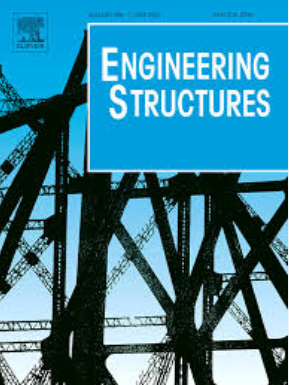Generative adversarial network-enhanced machine learning models for high-precision prediction of rectangular concrete-filled steel tube strength
IF 5.6
1区 工程技术
Q1 ENGINEERING, CIVIL
引用次数: 0
Abstract
Concrete-filled steel tubes (CFST) are widely recognized for their superior mechanical properties, including increased strength, ductility, and seismic resistance, making them popular in construction. However, accurately predicting the ultimate load (Nu) of CFST remains challenging due to the complex interactions between steel and concrete, and the varying parameters such as column dimensions, steel yield strength, and concrete compressive strength. Existing models and standards often lack precision, mainly when working with limited datasets. This study applies an advanced approach to improve Nu prediction for Rectangular CFST (RCFST) by combining Generative Adversarial Networks (GAN)-augmented data with machine learning and deep learning models. Four models (Gradient Boosting Regressor, Random Forest, Convolutional Neural Network, Residual Network) were initially trained on the original dataset. Subsequently, a GAN was utilized to generate synthetic data, expanding the dataset and improving model performance. The Random Forest model achieved the highest accuracy, with an R² of 0.9989, the root mean square error (RMSE) of 90.1, and the mean absolute percentage error (MAPE) of 1.3 %. A lightweight version of the Random Forest model was also developed to reduce computational complexity while maintaining an R² of 0.9979. Compared to three major standards (EN 1994, ACI, DBJ) and 18 machine learning models, the proposed models outperformed across key metrics including R², RMSE, and MAPE, demonstrating their effectiveness in predicting RCFST strength. Finally, a user-friendly graphical user interface (GUI) was developed, enabling direct engineering applications.
矩形钢管混凝土强度高精度预测的生成对抗网络增强机器学习模型
钢管混凝土(CFST)因其优异的机械性能而被广泛认可,包括增强的强度、延展性和抗震性能,使其在建筑中广受欢迎。然而,由于钢与混凝土之间复杂的相互作用,以及柱尺寸、钢屈服强度和混凝土抗压强度等参数的变化,准确预测CFST的极限荷载(Nu)仍然具有挑战性。现有的模型和标准往往缺乏精度,主要是在处理有限的数据集时。本研究通过将生成对抗网络(GAN)增强数据与机器学习和深度学习模型相结合,采用一种先进的方法来改进矩形CFST (RCFST)的Nu预测。在原始数据集上对四个模型(梯度增强回归器、随机森林、卷积神经网络、残差网络)进行初始训练。随后,利用GAN生成合成数据,扩展数据集,提高模型性能。随机森林模型的准确率最高,R²为0.9989,均方根误差(RMSE)为90.1,平均绝对百分比误差(MAPE)为1.3 %。随机森林模型的一个轻量级版本也被开发出来,以减少计算复杂性,同时保持R²为0.9979。与三个主要标准(EN 1994, ACI, DBJ)和18个机器学习模型相比,所提出的模型在包括R²,RMSE和MAPE在内的关键指标上表现出色,证明了它们在预测RCFST强度方面的有效性。最后,开发了一个用户友好的图形用户界面(GUI),实现了直接的工程应用。
本文章由计算机程序翻译,如有差异,请以英文原文为准。
求助全文
约1分钟内获得全文
求助全文
来源期刊

Engineering Structures
工程技术-工程:土木
CiteScore
10.20
自引率
14.50%
发文量
1385
审稿时长
67 days
期刊介绍:
Engineering Structures provides a forum for a broad blend of scientific and technical papers to reflect the evolving needs of the structural engineering and structural mechanics communities. Particularly welcome are contributions dealing with applications of structural engineering and mechanics principles in all areas of technology. The journal aspires to a broad and integrated coverage of the effects of dynamic loadings and of the modelling techniques whereby the structural response to these loadings may be computed.
The scope of Engineering Structures encompasses, but is not restricted to, the following areas: infrastructure engineering; earthquake engineering; structure-fluid-soil interaction; wind engineering; fire engineering; blast engineering; structural reliability/stability; life assessment/integrity; structural health monitoring; multi-hazard engineering; structural dynamics; optimization; expert systems; experimental modelling; performance-based design; multiscale analysis; value engineering.
Topics of interest include: tall buildings; innovative structures; environmentally responsive structures; bridges; stadiums; commercial and public buildings; transmission towers; television and telecommunication masts; foldable structures; cooling towers; plates and shells; suspension structures; protective structures; smart structures; nuclear reactors; dams; pressure vessels; pipelines; tunnels.
Engineering Structures also publishes review articles, short communications and discussions, book reviews, and a diary on international events related to any aspect of structural engineering.
 求助内容:
求助内容: 应助结果提醒方式:
应助结果提醒方式:


